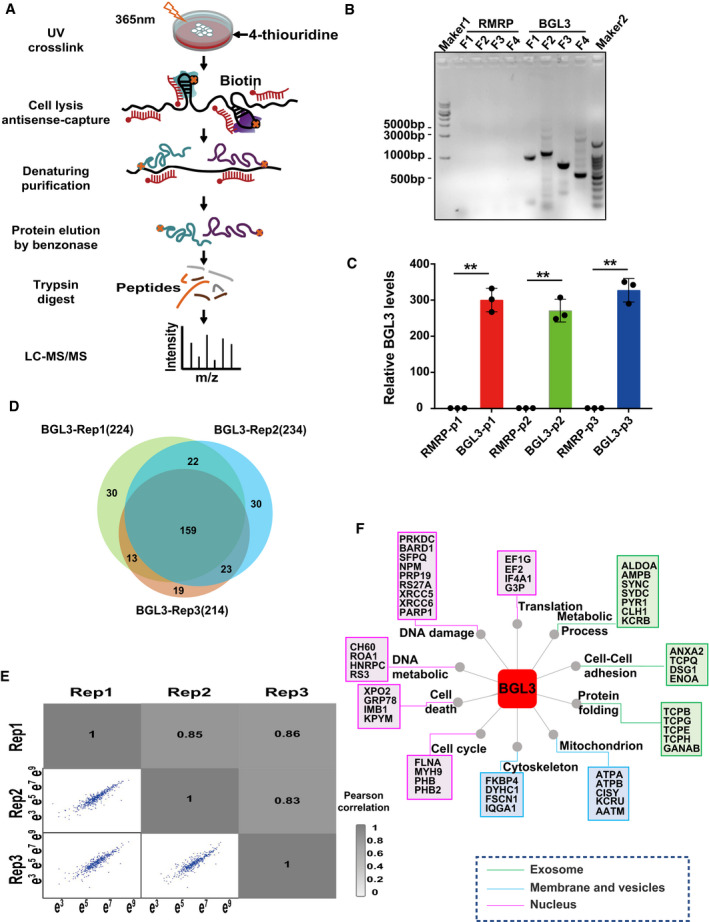Figure EV1. BGL3 directly binds BARD1 and PARP1 in living cells.

- Schematic overview of RAP‐MS.
- RT–PCR products of RNA antisense captured lncRNAs were analyzed on an agarose gel. Ladder, 1 kb (Maker1) and 100 bp (Maker2) DNA ladder. F1: BGL3 DNA fragment 1–970 bp, F2: BGL3 DNA fragment 970–2,016 bp, F3: BGL3 DNA fragment 1,905–2,650 bp, F4: BGL3 DNA fragment 3,181–3,696 bp.
- LncRNA being pulled down in the “BGL3 antisense group” (BGL3 group) and the control group (RMRP group) was examined by qRT–PCR using three different primers. P1: primer1, P2: primer2, P3: primer3. Data were presented as mean ± SD of three biological replicates and analyzed by two‐tailed Student's t‐test, **P < 0.01.
- Overlap of non‐redundant quantified proteins captured by BGL3 in three biological replicates.
- Pairwise correlations of protein intensity between replicate experiments. The Pearson correlation coefficient is indicated.
- BGL3‐interacting proteins were grouped based on cellular component and biological process pathways by GO analysis.
Source data are available online for this figure.
